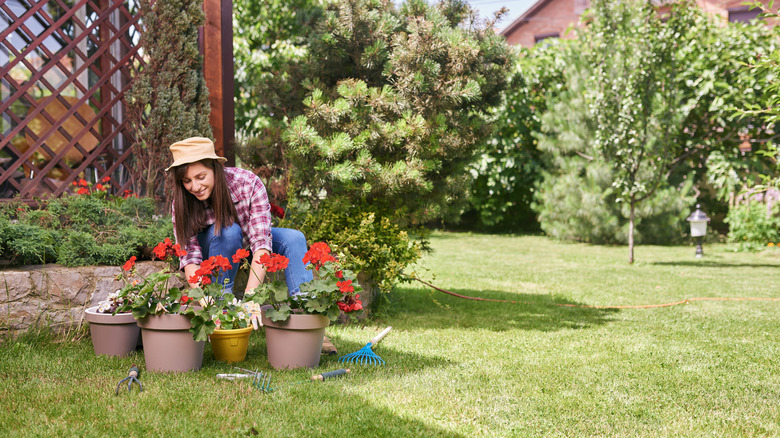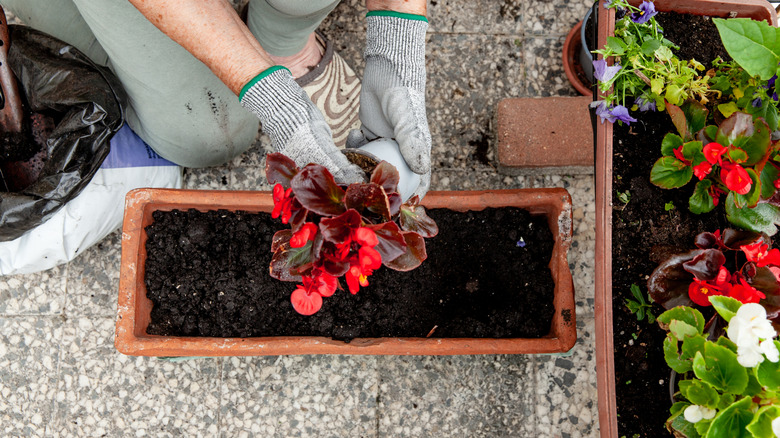How To Prep Your Begonias For Winter To Enjoy Them For Seasons To Come
Begonias (Begonia sp.) are among some of the most common types of flowering plants you might see in a home garden. While often grown as houseplants, they also do well when planted in outdoor containers or directly in the ground in shade gardens. Begonias have become so widespread that it's understandably challenging to keep up with the growing number of cultivars available. In fact, there are now more than 2,100 types of begonias. Knowing how to grow and take care of begonias also relies on understanding some of the key differences between each cultivar. Nevertheless, begonias all have one major thing in common: They do not like cold temperatures. You don't have to necessarily treat begonia plants like annuals that die during the first frost, though. By planning ahead of time, you can overwinter begonias based on type to help them survive into next year. This will require either bringing them indoors or digging up the tubers and storing them.
Begonias are native to tropical and subtropical areas, where they can naturally thrive in warm and humid climates. These plants do not like temperatures less than 55 degrees Fahrenheit, and they cannot survive freezing conditions. Begonias also prefer humid conditions with part shade. Given these facts, outdoor begonias tend to be grown as annuals in most parts of the U.S. unless you plan on overwintering them. Otherwise, begonias may be grown as perennial plants outside in USDA hardiness zones 10 and 11 only. It turns out that begonias are among the annuals you can overwinter to enjoy for years to come, but you must start the process during the early fall months for best results.
Ways to protect begonias before temperatures freeze
You may have initially looked for the best spot to plant begonias when you first decided to grow these popular flowering plants. Before winter approaches, though, you'll need to make plans to take these sensitive plants indoors as appropriate. If you live in a region that experiences freezing temperatures, all is not necessarily lost, especially if your begonias are already in containers. All you need to do is move them inside your home. Another option is to transfer begonias from the ground into pots for indoors, which is a common practice with bushy-type ("wax") varieties. They still require some sunlight, but only for two to six hours. Place them by a window that faces either east or west for a few hours of direct light. You'll also still want to make sure the soil is moist, but not overwatered or too dry.
While you can bring most types of container-grown begonias indoors, the process of overwintering looks a bit different for tuberous varieties. If you have tuberous begonias in your garden, allow them to die during your region's first frost of the season. Then, you will need to dig the tubers out of the ground and prepare them for storage. This involves allowing them to cure for a couple of weeks before drying out for another week. Once this process is complete, store the begonia tubers in a dark place until you can plant them during the spring. Start by planting the tubers in moist soil and then transfer outdoors when shoots emerge and when the risk of frost is done in your area.

